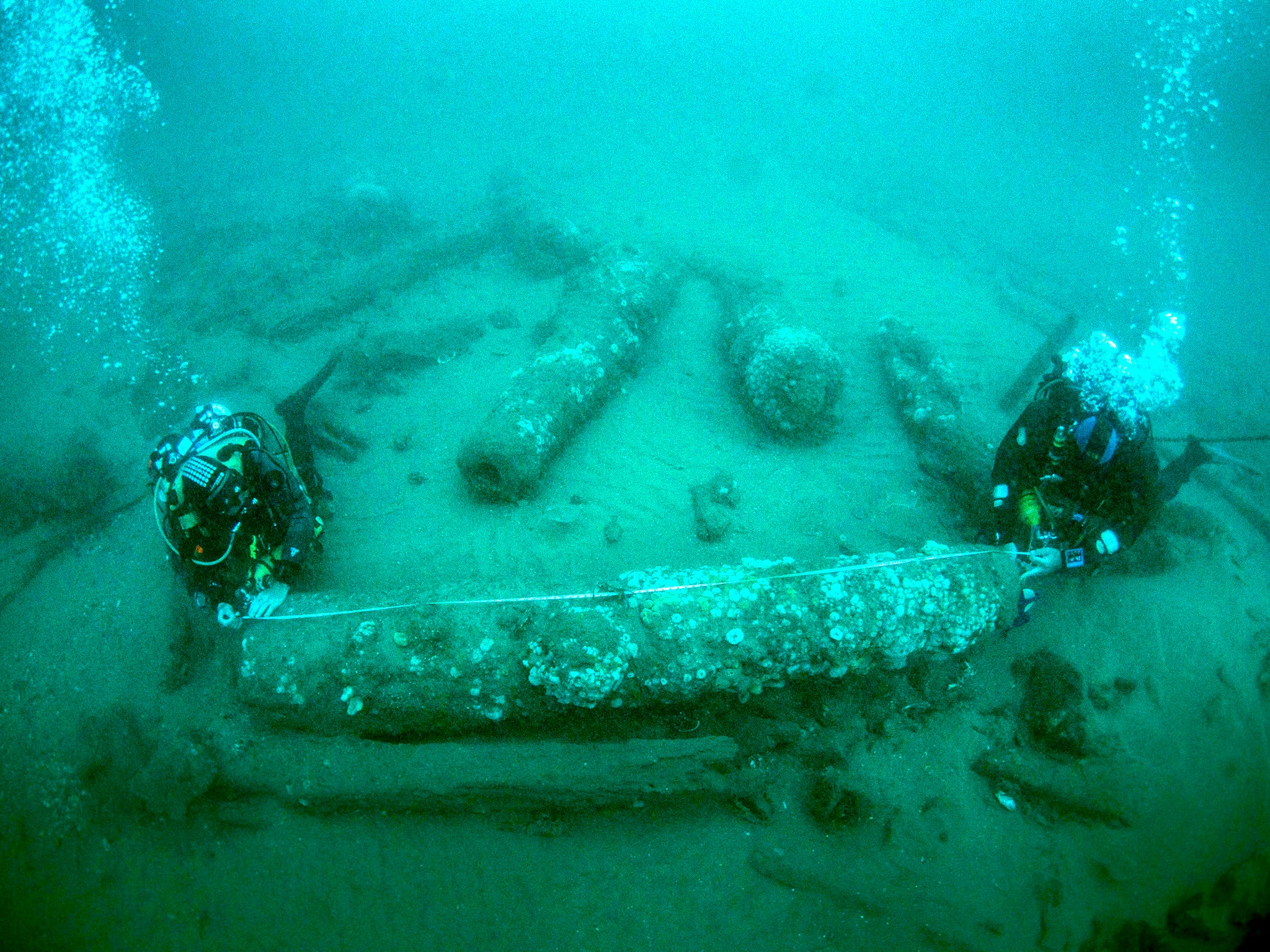HMS Gloucester: Wreckage of warship that carried King James II found off Norfolk coast
Site was first found in 2007 but discovery is only now being made public

Your support helps us to tell the story
From reproductive rights to climate change to Big Tech, The Independent is on the ground when the story is developing. Whether it's investigating the financials of Elon Musk's pro-Trump PAC or producing our latest documentary, 'The A Word', which shines a light on the American women fighting for reproductive rights, we know how important it is to parse out the facts from the messaging.
At such a critical moment in US history, we need reporters on the ground. Your donation allows us to keep sending journalists to speak to both sides of the story.
The Independent is trusted by Americans across the entire political spectrum. And unlike many other quality news outlets, we choose not to lock Americans out of our reporting and analysis with paywalls. We believe quality journalism should be available to everyone, paid for by those who can afford it.
Your support makes all the difference.The wreckage of a royal warship that carried the future king of England onboard moments before it sank has been discovered off the Norfolk coast.
The HMS Gloucester ran aground some 28 miles off Great Yarmouth 340 years ago. The incidenthappened after a dispute – about navigating the treacherous Norfolk sandbanks – between James Stuart, then the Duke of York, and the ship’s pilot James Ayres.
On 6 May 168 the ship hit a sandbank at about 5.30am and sank within an hour. Between 130 and 250 people died.
Many of the victims died because the Duke delayed abandoning ship until the last minute. The protocol at the time stated that people could not abandon ship before royalty did.
Instead of taking responsibility, the Duke blamed the pilot and said he wished that he would be hanged immediately. Mr Ayres was court-martialled and imprisoned.
In 1685, the Duke became King James II of England. In 1688, he was deposed by the Glorious Revolution and replaced by his Protestant daughter Mary and her Dutch husband William of Orange.

In 2007, the HMS Gloucester wreckage was located by a group of people, including brothers Julian and Lincoln Barnwell, following a four-year search over 5,000 nautical miles.
Due to the time taken to confirm the identity of the ship – and the need to protect an ‘at risk’ site, which lies in international waters – it is only now that the discovery can be made public.
Lincoln Barnwell said: “It was our fourth dive season looking for Gloucester. We were starting to believe that we were not going to find her, we’d dived so much and just found sand.
“On my descent to the seabed, the first thing I spotted were large cannon laying on white sand, it was awe-inspiring and really beautiful. It instantly felt like a privilege to be there, it was so exciting.
“We were the only people in the world at that moment in time who knew where the wreck lay. That was special and I’ll never forget it. Our next job was to identify the site as the Gloucester.”
Maritime history expert Prof Claire Jowitt, of the University of East Anglia (UEA) said it was the most important maritime discovery since the Mary Rose, the warship from the Tudor navy of King Henry VIII.
The Mary Rose sank in battle in the Solent in 1545, and was raised in 1982, later being put on display in Portsmouth.
Prof Jowitt said: “The discovery promises to fundamentally change understanding of 17th-century social, maritime and political history. It is an outstanding example of underwater cultural heritage of national and international importance.
“A tragedy of considerable proportions in terms of loss of life, both privileged and ordinary, the full story of the Gloucester’s last voyage and the impact of its aftermath needs re-telling, including its cultural and political importance, and legacy.
“We will also try to establish who else died and tell their stories, as the identities of a fraction of the victims are currently known.”
An exhibition is planned for Spring 2023 at Norwich Castle Museum and Art Gallery to display finds from the wreck and share ongoing historical, scientific and archaeological research.



Join our commenting forum
Join thought-provoking conversations, follow other Independent readers and see their replies
Comments